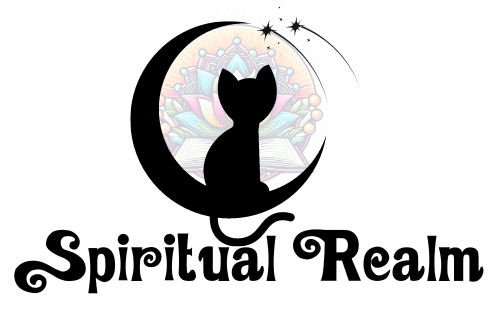Kaleidoscope Meaning Spiritual: Uncover Hidden Wisdom & Transformation
Have you ever looked through a kaleidoscope and felt a rush of vibrant colors and patterns? That mesmerizing experience goes beyond just visuals; it holds deep spiritual meaning. Let’s dive into the enchanting world where art meets spirituality.
The spiritual meaning of a kaleidoscope represents transformation, unity, and the beauty of change. Each shift in pattern symbolizes life’s journey and how we can find harmony amidst chaos.
Imagine seeing your own life reflected in those swirling colors. Each twist reveals new possibilities and perspectives that challenge your understanding of reality. Ready to explore more about this captivating concept?
Spiritual Significance of Kaleidoscope Imagery in Life
The spiritual significance of kaleidoscope imagery lies in its representation of transformation, unity, and the beauty inherent in change. Each unique pattern reminds us that life is a series of moments—constantly shifting yet interconnected. This visual metaphor encourages individuals to embrace their journey while recognizing the harmony within chaos.
Kaleidoscopes invite reflection on personal growth. As colors blend and reshape, they symbolize our evolving experiences. The vibrant display serves as a reminder that every twist can reveal fresh perspectives and opportunities for self-discovery.
The Symbolism Behind Colors
Colors play a vital role in the spiritual meaning tied to kaleidoscopes. Here’s how different hues resonate:
- Red: Passion and energy.
- Blue: Calmness and serenity.
- Yellow: Joy and optimism.
- Purple: Spirituality and intuition.
This rich tapestry of color not only beautifies but also connects us to various emotional states, reminding us to acknowledge our feelings as part of life’s intricate design.
Kaleidoscope Meditation Techniques
Meditation inspired by kaleidoscopic imagery can enhance mindfulness practices. By focusing on these dynamic patterns, one facilitates deeper introspection. Consider these simple techniques:
- Select a quiet space where you feel comfortable.
- Create or find images with swirling patterns that captivate your attention.
- Sit comfortably, breathe deeply, and allow your mind to engage with the changing visuals without judgment.
This practice fosters relaxation while encouraging an appreciation for the impermanence present in all aspects of life. Over time, it nurtures resilience against external chaos by cultivating inner peace amidst uncertainty.
Cultural Perspectives on Kaleidoscopic Imagery
Diverse cultures recognize similar themes within kaleidoscope imagery. For instance:
| Culture | Additional Meaning |
|---|---|
| Ancient Egyptian Art | Lifelong transformation through cycles represented by geometric shapes. |
| Sufi Mysticism | Unity with divine presence through fluid formations resembling cosmic order. |
| Navajo Patterns | Interconnectedness among nature, spirit, and humanity represented via intricate designs. |
Symbolic Interpretations of Kaleidoscopes in Spirituality
The kaleidoscope serves as a powerful symbol within spiritual contexts. It embodies transformation, unity, and the beauty inherent in change. The shifting patterns remind us that life is an ever-evolving journey.
Each rotation reveals new colors and shapes, suggesting that our perceptions can shift dramatically depending on our viewpoint. In many spiritual teachings, this concept aligns with the idea of perspective shaping reality.
Kaleidoscope as a Reflection of Inner Self
A kaleidoscope mirrors our inner world. As we twist its body, it reflects the myriad emotions and thoughts we harbor. Each vibrant pattern signifies aspects of ourselves waiting to be expressed.
“The true voyage of discovery lies not in seeking new landscapes but in having new eyes.” – Marcel Proust
This quote resonates deeply with how kaleidoscopes symbolize personal growth through self-reflection. Just like the changing designs inside a kaleidoscope, our inner lives are intricate and multifaceted.
Unity Amidst Diversity
The diverse patterns created by a single turn represent unity among different elements. In spirituality, this parallels the belief that all beings are interconnected despite apparent differences.
- Diversity: Embracing varied perspectives enriches our experiences.
- Harmony: Recognizing connections fosters peace within communities.
- Transformation: Life’s changes contribute to personal and collective growth.
The symbolic nature of these colorful forms encourages acceptance and love for diversity while highlighting shared human experiences.
Kaleidoscopic Vision: A Tool for Meditation
Meditation practices often utilize visual aids to deepen focus and awareness. The shifting images found in a kaleidoscope provide an engaging way to center one’s thoughts during meditation sessions.
| Meditative Benefits | Description |
|---|---|
| Cognitive Clarity: | Pursuing vibrant visuals sharpens mental clarity over time. |
| Sensory Engagement: | The dynamic display captivates attention while calming anxiety levels. |
This use enhances mindfulness practices by allowing individuals to immerse themselves fully in their experience without distraction from external factors. Such engagement promotes tranquility amidst life’s chaos—similar to viewing patterns through a lens where everything harmonizes beautifully together.
Cultural Significance Across Traditions
Kaleidoscopes have appeared across various cultures worldwide as symbols representing enlightenment or spiritual awakening. From ancient philosophies to modern interpretations, they emphasize change’s essential role within existence itself—reminding practitioners about life’s cyclical nature.
For instance, certain Eastern philosophies highlight impermanence using similar metaphors akin to those represented by these colorful instruments; thus forming bridges between art forms and spirituality throughout history!
Healing Properties Associated with Kaleidoscope Patterns
Kaleidoscope patterns are not just visually stunning; they also possess profound healing properties. These intricate designs can evoke feelings of peace and joy, promoting emotional well-being. The vibrant colors play a significant role in influencing our mood and energy levels.
The swirling shapes found in these patterns help stimulate creativity and positive thinking, making them valuable tools for mental health support. Many practitioners advocate using kaleidoscopes as part of mindfulness practices to enhance relaxation and reduce stress.
Emotional Healing Through Color
Colors have long been associated with various emotions, and kaleidoscopes encapsulate this idea beautifully. Each hue has its own unique vibration that can affect the mind and body:
- Blue: Calms the nervous system.
- Yellow: Boosts happiness and optimism.
- Purple: Encourages spiritual growth.
The dynamic interplay of color within a kaleidoscope allows individuals to experience a spectrum of emotions without judgment. Engaging with these vibrant visuals can be an effective way to process feelings during challenging times.
Cognitive Benefits
The ever-changing patterns in a kaleidoscope engage both sides of the brain, fostering cognitive flexibility. Studies suggest that visual stimulation through such art forms may improve problem-solving skills while enhancing focus and concentration.
A 2019 study highlighted how engaging with colorful visual stimuli could lead to increased creativity among participants.
This cognitive engagement is beneficial not only for children but also for adults seeking innovative outlets for their thoughts or solutions to complex issues. Incorporating such experiences into daily routines may provide mental clarity amidst life’s chaos.
Meditative Practices Enhanced by Kaleidoscopes
Kaleidoscopes can serve as aids in meditation practices by encouraging deep reflection. Focusing on shifting patterns enables individuals to enter states of tranquility—allowing worries to dissolve away.
The act of observing movements creates an immersive experience that helps ground one’s thoughts, facilitating deeper meditative states over time.
| Meditation Technique | Description |
|---|---|
| Sight Meditation | Use a kaleidoscope while practicing mindful breathing techniques. |
| Doodling Inspiration | Create artwork inspired by observed colors from the pattern changes. |
Whether used alone or integrated into group settings, kaleidoscope therapy represents an innovative approach towards emotional stability and mental wellness. By embracing this art form’s healing qualities, individuals open themselves up to new dimensions of self-care that celebrate beauty alongside resilience.
How Kaleidoscope Reflections Relate to Personal Growth
The reflections seen through a kaleidoscope can teach us valuable lessons about personal growth. Each shift in the colorful patterns symbolizes the constant changes we experience in life. Just like these intricate designs, our journeys are filled with unexpected turns that foster development and self-discovery.
This connection between kaleidoscopes and personal evolution emphasizes adaptability. The ability to embrace change is crucial for growth. As we navigate life’s complexities, each twist reveals new insights and perspectives.
The Role of Change in Personal Development
Change is an inevitable part of life, much like the shifting images within a kaleidoscope. Recognizing that every alteration leads to a unique pattern can inspire resilience. Research has shown that individuals who accept change tend to experience greater satisfaction in their lives.
A study published in the Journal of Personality found that adaptability contributes significantly to emotional well-being. This mirrors how every turn of a kaleidoscope brings forth another beautiful design, reminding us that challenges often lead to profound beauty.
Finding Harmony Amidst Chaos
Kaleidoscopes illustrate how chaos can coexist with harmony. In moments of turmoil, it may seem challenging to find balance; however, just as colors blend seamlessly within the tube, we too can learn to integrate various aspects of our lives.
The journey towards personal growth involves recognizing both chaos and order as essential components.
This understanding encourages individuals not only to endure difficult times but also to appreciate them as part of their unique story. Embracing all experiences fosters deeper connections with oneself and others.
New Perspectives Through Reflection
The act of looking through a kaleidoscope encourages reflection on our own lives. Each moment provides an opportunity for introspection; reflecting on past experiences helps illuminate paths forward. Cognitive flexibility, or the capacity to adapt one’s thinking when faced with new situations, plays a vital role here.
A research article from Psychological Science indicates that cognitive flexibility enhances problem-solving skills and creativity. Such abilities are akin to adjusting the angles while gazing into a kaleidoscope—finding innovative solutions amid complexity contributes significantly toward individual growth.
FAQs
How does a kaleidoscope symbolize personal transformation?
A kaleidoscope symbolizes personal transformation by reflecting life’s changes. Each shift in its patterns represents new experiences, encouraging individuals to embrace growth and adaptability amidst the constant flux of existence.
What role do colors play in kaleidoscopic spirituality?
Colors within a kaleidoscope enhance spiritual experiences by evoking emotions. Each hue resonates with different feelings, guiding practitioners toward self-awareness and deeper connections with their inner selves during meditative practices.
Can using a kaleidoscope aid in mindfulness practices?
Yes, engaging with a kaleidoscope can significantly enhance mindfulness. The dynamic visuals draw attention away from distractions, promoting relaxation while encouraging deeper introspection and clarity during meditation sessions.






